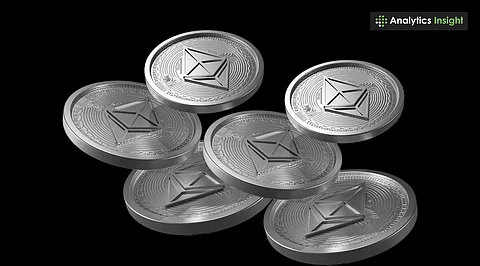

Ethereum (ETH) may be on track for a strong year-end rally. BitMEX co-founder Arthur Hayes and BitMEX chair Tom Lee have reaffirmed their projections that ETH could climb to $10,000 or higher before the end of 2025. Despite a recent market pullback and less than three months remaining in the year, both analysts maintain their conviction.
Lee shared his long-held prediction on the Bankless podcast, estimating Ethereum could reach “somewhere between $10,000 and $12,000” before year-end. Hayes, appearing alongside him, echoed the same optimism, saying he remains firm on the $10,000 target.
Their confidence stems from Ethereum trading above $4,100, marking a renewed market strength after weeks of consolidation.
According to CoinMarketCap, Ethereum climbed 4.26% in the last 24 hours to trade at $4,149.12. Its market capitalization rose to $500.79 billion, reinforcing its position as the second-largest cryptocurrency after Bitcoin.
Trading volume surged 8.81% to $61.52 billion, showing vigorous market activity. Ethereum’s circulating supply remains stable at 120.69 million ETH, matching its total supply. The volume-to-market cap ratio stands at 12.29%, suggesting healthy liquidity conditions.
The intraday chart showed ETH rebounding from a low near $3,883, reclaiming the $4,100 mark. This upward move signals renewed investor confidence amid a wider crypto market recovery. With a 100% profile score and improving sentiment, traders are now eyeing a potential retest of resistance near $4,200 in the short term.
But can Ethereum sustain this surge long enough to meet the ambitious $10,000 goal?
Lee believes Ethereum’s long consolidation supports his forecast. “Ethereum’s basically been basing for four years now, just broke out of the range,” he explained. He described the move not as speculative excess but as a phase of “price discovery at a new level.”
ETH briefly revisited its 2021 highs in August before pulling back, but it has yet to maintain a decisive breakout. Lee noted that the projected end-of-year price might not represent the top but rather a “big level … a happy level.”
Historical data suggests moderation may be more realistic. Since October 1, Ethereum has averaged 21.36% gains in Q4 since 2016, according to CoinGlass. Applying that average to current prices would position ETH near $5,000, still below the bullish $10,000 forecast but reflecting meaningful growth potential.
Renowned analyst Michaël van de Poppe posted a detailed ETH/BTC chart on X, identifying 0.03250 BTC as an “ideal zone for buys.” At the time of posting, ETH traded near 0.03572 BTC, down 2.99% intraday.
Van de Poppe stated, “ETH hit the ideal zone for buys and I think it’s ready for a trend switch. What does it need? A higher low and then we’re off towards new highs.”
The chart indicated a possible bottom formation within a gray accumulation zone, signaling consolidation. A rebound above the 20-day moving average could confirm renewed momentum. Additionally, lower trading volumes since early October hint at waning selling pressure, while RSI movement suggests improving strength. Analysts agree that if ETH sustains a move above 0.038 BTC, it could initiate a fresh uptrend heading into the final quarter of 2025.
Related: Crypto Prices Today: Bitcoin Price Above $112,000, Ethereum Slips 0.07%, Solana Turns Green
Ethereum continues to command attention as Tom Lee and Arthur Hayes reaffirm a $10,000 price forecast before the year ends. ETH has regained strength above $4,100, with CoinMarketCap showing a $500.79 billion market cap and trading volumes exceeding $61 billion.
Join our WhatsApp Channel to get the latest news, exclusives and videos on WhatsApp
_____________
Disclaimer: Analytics Insight does not provide financial advice or guidance on cryptocurrencies and stocks. Also note that the cryptocurrencies mentioned/listed on the website could potentially be scams, i.e. designed to induce you to invest financial resources that may be lost forever and not be recoverable once investments are made. This article is provided for informational purposes and does not constitute investment advice. You are responsible for conducting your own research (DYOR) before making any investments. Read more about the financial risks involved here.
